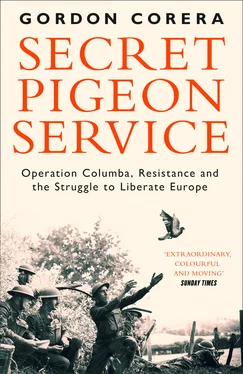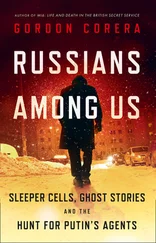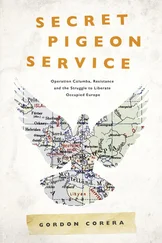1 ...7 8 9 11 12 13 ...17 A few weeks after Columba began, a message recorded that everyone had heard the ‘startling news about Hess’ – the Deputy Führer who had landed in England on some kind of bizarre mission in May and was now in custody. The Columba message noted it had made a ‘big impression on the Boches’. Another said that the German soldiers tried to listen to the English wireless to hear what had happened and did not believe the claims on German radio about the Deputy Führer’s mental illness. The morale of the Germans was not always good. One message that summer reported that sixteen pilots near Passchendaele being trained at an aerodrome were imprisoned for not flying, while one had actually taken off with his aeroplane and fled. Another writer talked of his conversations with the German soldiers. ‘When we talk to a soldier he dares to give his view they are all tired [of the situation] – but then he keeps looking round to see if another soldier is not approaching for they have no confidence in each other.’
One pigeon from Folkestone was found by a fellow pigeon lover in northern France. The English pigeon ‘could hardly have come into better hands’, he wrote in a detailed message tinged with sadness. He provided a long note full of details of life and of whatever movements he had seen, including the location of German telephone exchanges. He suggested that the Germans were convinced the British would not dare try a landing and could easily be defeated if the British did come. He did not want compensation for his efforts. He was just serving his country. But there was another reason. ‘This is a means for me to avenge myself for my son, whom they have killed.’ His son could not be replaced, but he did say that after the war he would like to replace all his own pigeons, which had also been killed.
Each pigeon was an act of resistance, however small – the risk of a life for the chance of contact with distant Britain. A bond was being created between the sender of a message in a small rural village and the official reading it in London’s War Office. But could Columba provide real, hard intelligence, more than just scraps and colour? The first sign that it might arrived in June.
Top of the list of questions to which Melland and Sanderson wanted answers was whether the finder of a pigeon knew anything of possible plans for the invasion of England. The seventh Columba message pointed to just that. ‘The attack on England will occur very soon, unforeseen and terrible,’ it warned in spring 1941, saying ships were being prepared in the Grand Canal in Belgium and four new aerodromes would be completed in the next few days. Docks which had been bombed were being repaired. Sanderson would find pigeons among the best sources for invasion intelligence, sometimes noting when they corroborated other sources or failed to back up reports from MI6 agents whom he was not sure about. ‘Valuable reports continue to arrive by pigeon,’ the official indicator’s document noted, adding that the troops did not hold out much enthusiasm for the possibility but that large-scale exercises still seemed to be taking place. In May and June 1941 sources were still suggesting that an invasion was possible, and that exercises were occurring and logistics like barges being put in place.
A pigeon from Cambridge fell in Huines near the Channel coast on 14 June 1941 and was liberated from Pontorson on the 17th. It had an unusual journey back. It was found in Penzance on 20 June. A military officer opened the message and ‘with great zeal’ translated it himself. It took a further three days for it to be transmitted by a wireless officer to the War Office, leading to an angry letter explaining that in future any pigeon container found with a coloured disc was to be sent immediately by dispatch rider.
The annoyance arose because that message from Pontorson – Columba message 19 – was one of the first to show what the operation might be capable of achieving, especially when it came to the challenge of warning of possible invasion. It contained rich detail of troop movements out of Brittany and the use of nine motor barges near Mont St Michel for embarkation practice. It pointed to an airfield at Caen where the planes were housed in specially camouflaged hangars. Details of anti-aircraft positions were given, and the writer offered specific suggestions of where to bomb. They also warned of fifth columns in England, having heard a drunken officer say that they were dropping parachutists in English uniform who spoke the language. There was even a special instruction centre in Brest to train them. He also wrote that a letter the previous day from a German officer to a female collaborator had indicated that an invasion was to come about next week. This was precisely the kind of information Sanderson was looking for.
The author was highly motivated. ‘The population here is 95% with you and hopes for deliverance. They vomit Darlan [the French admiral who collaborated in the Vichy regime] and his clique of traitors; we are ashamed to be represented in the eyes of the world by such a band of bastards. There are some “swine” here too, as everywhere but I’ve got them listed.’ The author went on to name the specific hotel keepers at Mont St Michel who ‘fight each other as to who shall make the most fuss of the Boches’. This scandal should be broadcast, he suggested, on the BBC, which he said he could hear very well. On Sunday, 15 June, he reported, there had been violent riots in Rennes when the people tried to commemorate those who died in the fall of France. The Germans and the police drove back the crowd to the Place du Palais where the Marseillaise was sung ‘with great fervour’ and accompanied by cries of ‘death to Ripert’ – the prefect nominated by the Vichy government to the area. Reprisals had come thick and fast afterwards, but the plan was to repeat the demonstrations on the night of the 17th – the very night the individual was writing the message. He ended with ‘Vive La France, Vive L’Angleterre and Vive de Gaulle’. The writer, who signed himself Arvor 114, asked for more pigeons and gave a specific location in a marsh near a railway line.
The Columba team analysed the message carefully. It was unusually detailed. How, when travel restrictions were in place, could someone living in Pontorson be in a position to report on events as distant as Caen in one direction and Beaumont-Hague in the other? Could it be a plant? They went through the details paragraph by paragraph. The troop movements, they judged, matched those of message number 18 and the train movements also seemed about right. The claim of poor morale in the area was supported by an MI6 source. Other information was considered fairly likely to be true or ‘sensible’. They carefully examined the request to name certain collaborators on air. Could this be an attempt to implicate genuine members of the resistance? ‘On the whole, we think not,’ was the verdict.
One or two points were considered unlikely to be true, but the writer’s wide-ranging knowledge could be explained by travel entailed in his job or by information being passed on from others. That would be similar to the way MI6 sources often reported, and ‘the information he has supplied us is certainly well up to their standard,’ the Columba team noted. The decision was made to consider the message valid and drop more pigeons in the marsh where they had been requested.
On 2 July 1941, the results from Columba’s initial foray were written up. Over three months, 221 birds had been released over Flanders, Normandy and Brittany. Forty-six returned, 19 with messages, 17 of which contained information. And this information had already shown its value. The six messages from Normandy and Brittany helped identify two German infantry regiments and also the movement of troops away from Cherbourg and Brittany. This was especially interesting since there had been few such indications from MI6 sources. What was particularly special about Columba was that intelligence would be in the hands of those hungry for information within hours of a message being written. This was unique among sources of intelligence, and the freshness of the information was something London would frequently marvel at. ‘I think this form of intelligence is most valuable and has great possibility and should be encouraged,’ the Deputy Director of Military Intelligence wrote. It was noted that it was an economical operation. The RAF planes were going across the Channel anyway and the main contribution was that of the pigeon owners themselves, who gave of their time and their birds freely. Columba was up and running. And within days of that first summary of its efforts, its most important message would arrive.
Читать дальше












